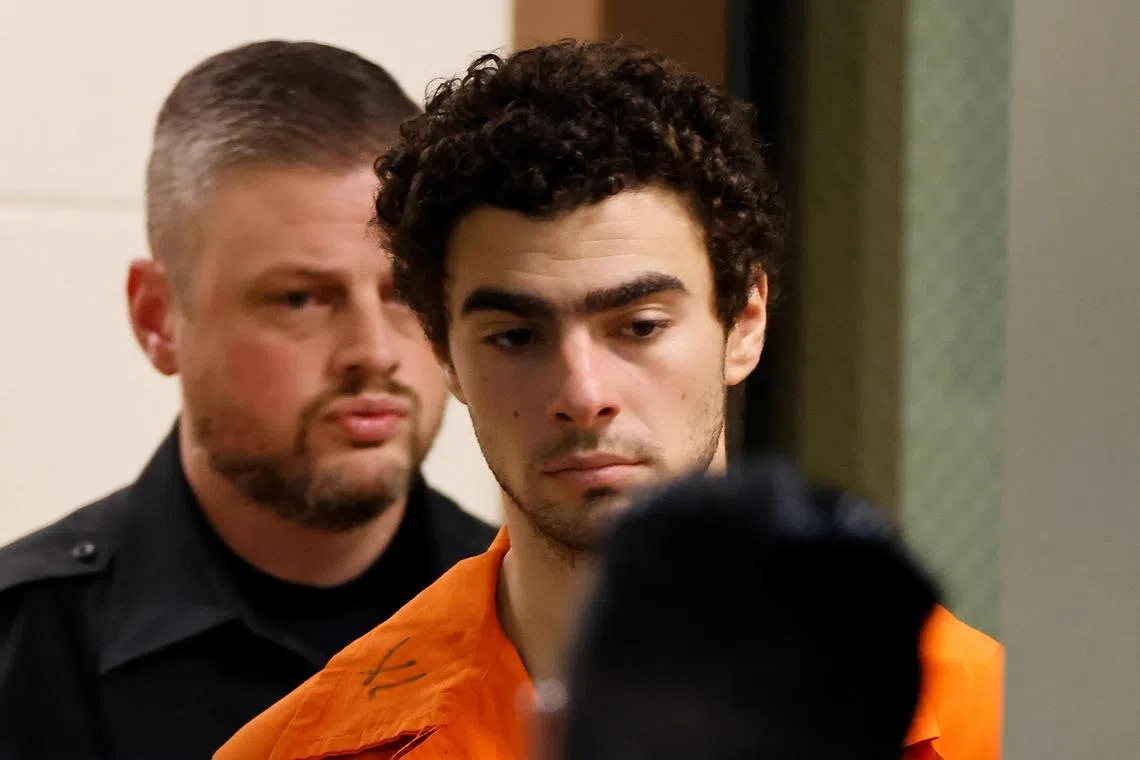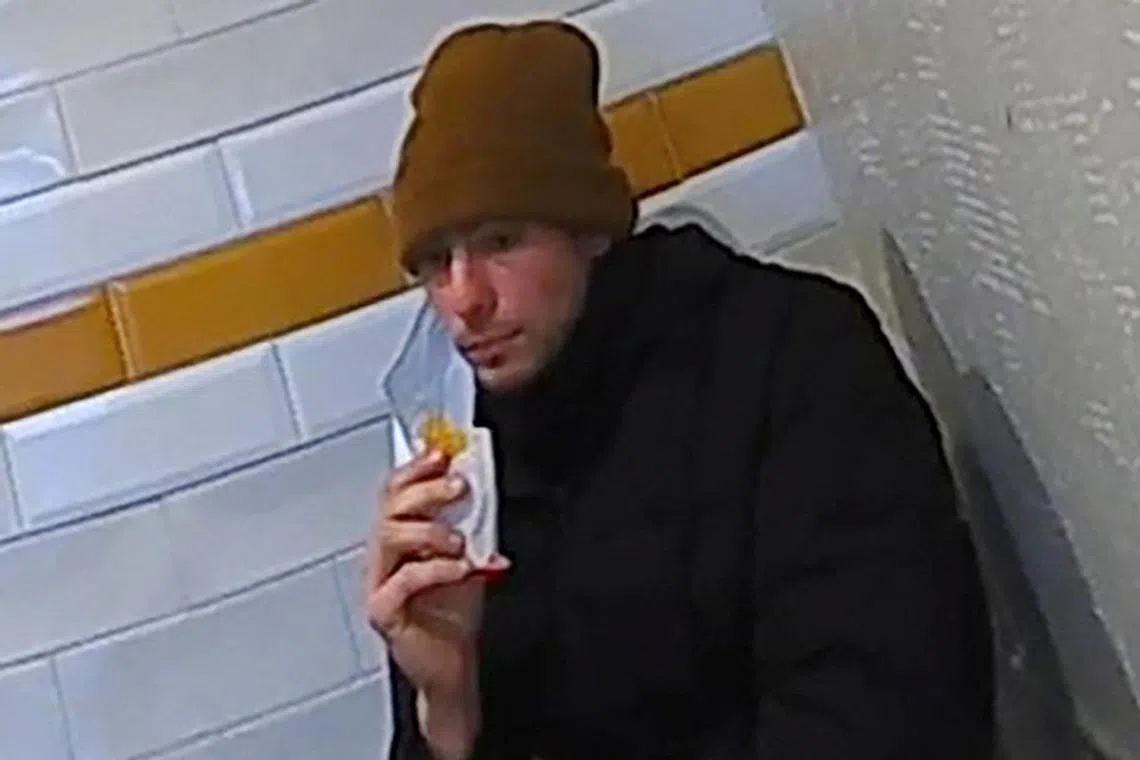Eyes, not tech, led police to suspect in killing of UnitedHealthcare CEO
Sign up now: Get ST's newsletters delivered to your inbox

A diner at a McDonald’s recognised Luigi Mangione from wanted photos of the suspect in the killing of CEO Brian Thompson.
PHOTO: REUTERS
Follow topic:
NEW YORK – In the end, it was the simple act of distributing photos – not sophisticated facial recognition technology – that led police to the man who has been charged in the fatal shooting of a health care executive
After the shooting of UnitedHealthcare CEO Brian Thompson on Dec 4, the New York Police Department began releasing a steady drip of images. The photos, taken together, appeared to show a young man with light skin and dark features. One photo – crucially – showed his entire face.
Even as police recovered what they called an “enormous amount” of forensic evidence and video, it was that specific photo that led to the arrest of a man on the morning of Dec 9 about 480km from New York City, according to Chief Joseph Kenny, the New York Police Department’s chief of detectives.
Just after 9am on Dec 9, in a McDonald’s in Altoona, Pennsylvania, a customer remarked that a fellow diner resembled the man in the wanted photos, and an employee called the police, who detained the man for questioning.
The man, whom police identified as Luigi Mangione, 26, of Maryland, was carrying a gun
Chief Kenny said it was hard to credit the break in the case to any one moment or piece of evidence, but that if he had to, “it would be the release of that photograph to the media”.
For experts, the case was a reminder of how – even as facial recognition technology grows more sophisticated – distributing photos and relying on the public to recognise a face can still play a critical role in investigations.
Professor Sean Patrick Griffin, a former Philadelphia police officer who teaches criminal justice at The Citadel, a military college in South Carolina, said this was not a typical case.
“That photo has been seen more times than in your average homicide,” said Prof Griffin, who added that the photos also showed enough of the man’s face to play a useful role.
In the photo that appears to have led to Mangione’s arrest, the suspect has distinct facial features: dark eyes and eyebrows, high cheekbones and a broad smile that curls at the corners.
“Not just dark, but prominent eyebrows,” said Prof Griffin, who said such a recognisable trait was not ideal for someone seeking to get away with a high-profile crime.
Mr Robert Baer, a former CIA officer and the author of several books, including The Perfect Kill: 21 Laws For Assassins, said he was surprised only that it had taken so long for police to find someone.
“Once they had that guy’s picture, when he pulls his mask down, it was a given he would be arrested,” he said.
Like other experts, Mr Baer mentioned that a professional hit man would have been more careful about exposing his face on camera.
Look-alike contest
The arrest came five days after Mr Thompson was killed outside a Hilton hotel in midtown. Within hours, police released grainy images of a man wearing a backpack, his arms extended as he fired his gun, and, later, riding a bicycle as he fled.
More images of the suspect were soon released.
Two photos – captured by cameras at the hostel on the Upper West Side of Manhattan where he stayed – showed a man in a hooded jacket. His face was not covered, and in one, he was smiling.
Over the weekend, two images emerged showing a man in a slightly different get-up – a surgical mask and a black coat – taken from a taxi. In one, he is seen peering through the partition in the cab, his dark eyes and eyebrows clearly visible above his mask.
The images helped fuel broad interest in the case.

Luigi Mangione, 26, the suspect in the killing of UnitedHealth CEO Brian Thompson, is photographed shortly after being discovered by police at a McDonald’s restaurant in Altoona, Pennsylvania.
PHOTO: REUTERS
Some people drew comparisons to celebrities. There was at least one look-alike contest, in a Manhattan park. The suspect even had something like fans, because, in the words of one expert, Mr Michael C. Farkas, “people hate the health care insurance industry”.
Mr Farkas added that many people, however, were clearly interested in helping law enforcement solve the case.
“There’s a reason why people are still doing things that would seem strange, like printing ‘Wanted’ posters,” said Mr Farkas, a defence lawyer who has worked as a New York City homicide prosecutor. “People actually recognise photos from hard-copy sources.” NYTIMES

